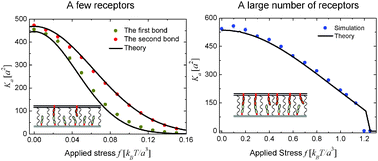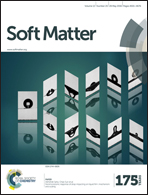The glycocalyx promotes cooperative binding and clustering of adhesion receptors
Abstract
Cell adhesion plays a pivotal role in various biological processes, e.g., immune responses, cancer metastasis, and stem cell differentiation. The adhesion behaviors depend subtly on the binding kinetics of receptors and ligands restricted at the cell–substrate interfaces. Although much effort has been directed toward investigating the kinetics of adhesion molecules, the role of the glycocalyx, anchored on cell surfaces as an exterior layer, is still unclear. In this paper, we propose a theoretical approach to study the collective binding kinetics of a few and a large number of binders in the presence of the glycocalyx, representing the cases of initial and mature adhesions of cells, respectively. The analytical results are validated by finding good agreement with our Monte Carlo simulations. In the force loading case, the on-rate and affinity increase as more bonds form, whereas this cooperative effect is not observed in the displacement loading case. The increased thickness and stiffness of the glycocalyx tend to decrease the affinity for a few bonds, while they have less influence on the affinity for a large number of bonds. Moreover, for a flexible membrane with thermally-excited shape fluctuations, the glycocalyx is exhibited to promote the formation of bond clusters, mainly due to the cooperative binding of binders. This study helps to understand the cooperative kinetics of adhesion receptors under physiologically relevant loading conditions and sheds light on the novel role of the glycocalyx in cell adhesion.


 Please wait while we load your content...
Please wait while we load your content...